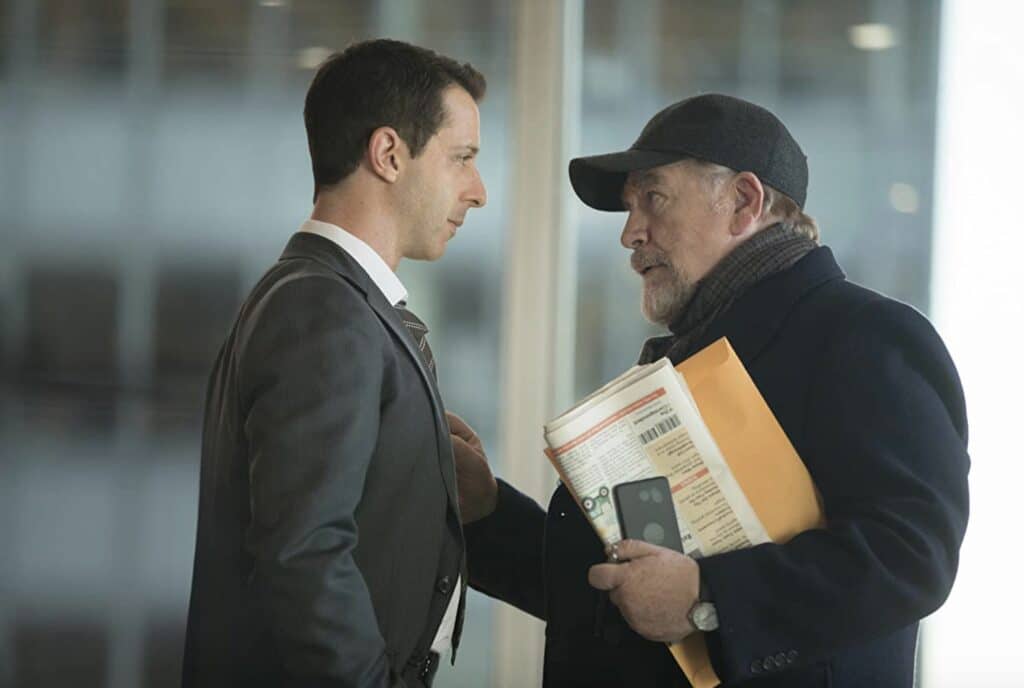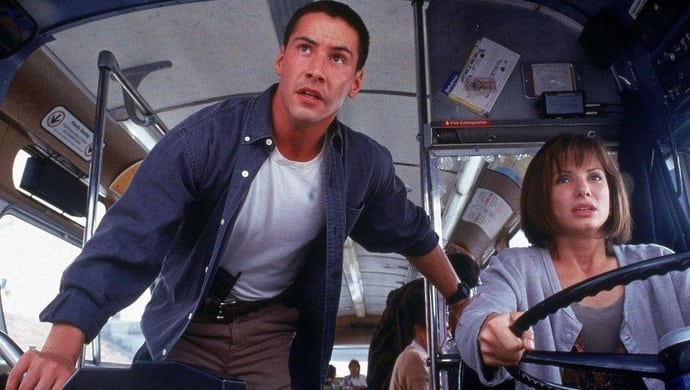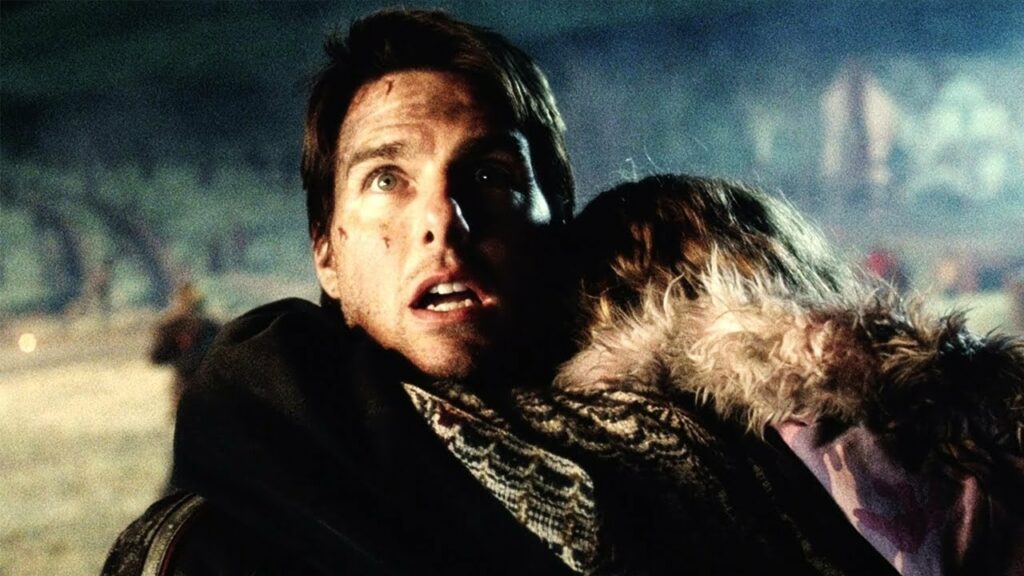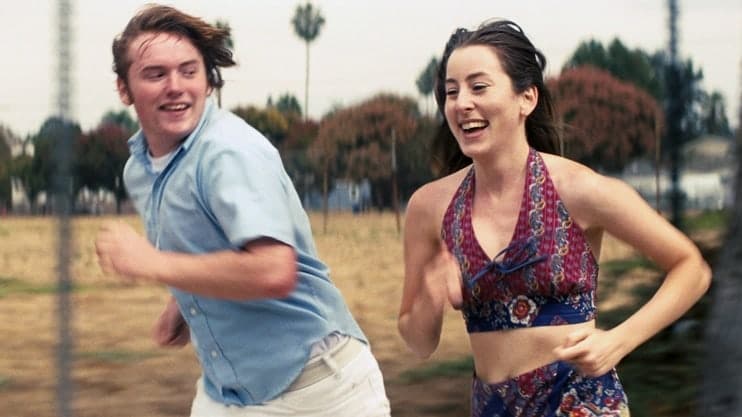Table of Contents
- What is an Active Protagonist?
- Goals and Desires
- Matchmaking: Antagonism and the Active Protagonist
- Escalation and the Active Protagonist
- Actioning Dialogue and Avoiding Passivity
- Stakes and Ticking Clocks
- Examples of Active Protagonists
- Ron Woodroof in Dallas Buyers Club
- Joe Goldberg in You
- Ray Ferrier in War of the Worlds
- AC 12 in Line of Duty
What is an Active Protagonist?
An active protagonist is a main character who is not merely affected by the world around them, but affects that world too. Their actions, both internal and external, reveal their core character and give stories the momentum needed to unfold engagingly.
Active protagonists have the potential to be leaders of the pack, whether that ends up being their situation or not. These include most protagonists throughout TV and cinema history.
However, writing this element is not as automatic as you might think. After all, plenty of effective minor characters are passive.
But if your protagonist is wandering through the universe, suffering its slings and arrows and wishing it’ll all work out fine; then the story will likely disengage the audience.
Indeed, many protagonists start off passive. Even the hero of a galaxy Luke Skywalker was once just an errand-running Tatooine farm boy. These protagonists unwittingly have greatness in their blood. And it’s the inciting incident that makes them switch, vitally, from passive to active.
Without activation, such protagonists can make the most original and brilliant concepts seem half baked. So let’s take a look at some fundamentals, tips and examples when it comes to writing an active protagonist.
Goals and Desires
Goals give the protagonist somewhere to take the story, and the desire to do so. Desire will give your protagonist reasons to be active, and plausibility for those actions that are, to them at least, justified. You must make sure the goal is clear not only to your protagonist but to the audience too.
Goals can change but they should become even more desirable than the original one. The changing of goals will make your protagonist internally active, as they must make choices.
Desire is of course broader than just the goal. Licorice Pizza, for example, has two brilliantly active protagonists. They don’t just desire each other, but also separate things in life. These ‘things’ are too general to be considered goals. But it’s these desires that drive them forward and take them in separate directions.
- Gary’s goal is to win Alana’s heart. Their love, however, is evident early on. This illustrates how a divisive goal is not necessarily paramount in creating an active protagonist.
- Their other desires make up for the fact that the goal is subtextually achieved in Act One.
Alana is an intelligent, political, and capricious woman. She struggles with the misogyny of the 1960s and maturing out of hanging with a fifteen-year-old. Gary is a funny, naive, enterprising half-man-half-boy who could talk himself into, or out of, a myriad of situations.
So what does this mean for a character’s goal? Well, merely using the goal to create desire might have its limits. Instead, complex character traits that include strong desires can be enough to make your protagonist active.
Gary and Alana pursue desires in many different ways (maturity, respect, thrills). And it’s these things that drive them forward. When the goal isn’t as simple as achieving something concrete, desires can play an important overlapping role.
Matchmaking: Antagonism and the Active Protagonist
Crafting the protagonist’s profile in respect of antagonism is essential to making them active.
“A protagonist and his story can only be as intellectually fascinating and emotionally compelling as the forces of antagonism make them.”
Robert McKee
The protagonist should be dwarfed by these forces in order to be properly active. If your protagonist stands a good chance, then watching them succeed will be boring.
Being active is relative to antagonism and idiosyncratic to the character.
One way to create an active protagonist is a form of mis-matchmaking. Pit them against forces that they would be the last person apt to overcome. A great example of this comes via Po in Kung Fu Panda.

If Tigress was dubbed ‘Dragon Warrior’ then we’d probably be less interested. We’d know the Kingdom was in safe hands.
But the ‘Dragon Warrior’ happens to be the clumsiest person (or panda) in the world. Suddenly there are complex obstacles of self-doubt, rejection from one’s heroes, and learning Kung Fu.
However such a steep dynamic might be too implausible for your script. Of course, antagonism is not the only dynamic.
Take Chuck from Cast Away, for example.
- He’s an exec analyst who travels the world being extremely pragmatic.
- Of all the choices for a protagonist, he’s pretty high on the ‘suitability scale’.
- But because the forces of antagonism are elemental and demand complex action, it would be unnecessary (and implausible) for him to be, say, an agoraphobic.
- Equally, if he were a survivalist then the movie would feel like an instructive demo.
Consider how suitable your protagonist is for overcoming the forces of antagonism. Do this on a basic, profile level before crafting their finer nuances via a character bio.
Escalation and the Active Protagonist
Furthermore, each major obstacle must be harder to overcome than the last in order to escalate the protagonist’s actions. One minute they’re running from a cop, the next it’s ten cops coming from all directions.
Now the protagonist has to do something craftier than just running. Now they really have to be active.
The minor obstacles knitted into scenes hold our attention and keep the protagonist struggling. Minor obstacles don’t necessarily need to escalate, but they shouldn’t be anticipated either.
This is all about surprising your character and surprising your audience. You’re keeping both on their toes. Again, anything too easy for the protagonist quickly becomes boring. You have to challenge your protagonist as a writer. And it’s in the rising to this challenge that the protagonist finds their activeness.
The active protagonist is most interesting when the world doesn’t react in the way they expect. And this might go hand in hand with escalation. As they move through this story, they learn and grow. But they never quite learn and grow enough to fend off the antagonist forces.
That is until the conclusion. Here they may finally break through and shrug off the antagonist force. A confluence of events might help smooth this path. But it ultimately must be the protagonist‘s choice that leads them to higher ground. This is an essential part of the active protagonist.
Actioning Dialogue and Avoiding Passivity

When your protagonist speaks, are they simply conveying information? Or are they actively doing something else too? If Molly says “it’s blue” is she just describing something? Or is she correcting or thwarting her stupid sibling, who supposed “it’s grey”?
This is known as ‘actioning’ dialogue. Playwrights coined the term for describing each line in their script with highly specific transitive verbs. Notes such as ‘Debase’ or ‘Placate’ or ‘Scandalise’ would accompany dialogue; similar to a parenthesis, but constant. This was to help thespians rehearse. And it can be used as a great way to make sure your protagonist isn’t passive.
By ascribing specific actions to every line of dialogue you’re again making sure that your protagonist is making choices. The scene isn’t washing over them. Instead, they play an active part within it.
Crafting an active protagonist is all about making sure they are contributing to the action and story at every level. Even if it seems they are passive in a certain situation, by highlighting what exactly each reaction and action truly means in its subtext, you are giving their role in the scene meaning, purpose and direction.
If you use scriptwriting software like Final Draft, then you should be able to isolate your protagonist’s dialogue and therefore track it.
Stakes and Ticking Clocks

Aside from missing out on the goal’s benefits, what happens if the protagonist doesn’t reach their goal? Bad things, ideally. Stakes imbue the protagonist with the fear, or motive to be active.
Creating stakes means we see sides to the protagonist that otherwise would stay hidden. Stakes are also useful for a protagonist who is reluctant to take action. They might, for example, reject the goal in the first act.
The ‘Ticking Clock’ is a device to put a time limit on the possibility of achieving the goal/saving the stakes (‘Her plane boards in five minutes!’). If the walls are closing in on the protagonist, then passivity is easily avoided.
The audience will respect and engage with a protagonist who is active about a pressing situation. The Ticking Clock sounds like such a somewhat cliched device. But for a valid reason: it’s probably the most sure-fire technique for making a protagonist active ‘in the moment’.
A protagonist who makes decisions is active, and applying pressure to those decisions gives them more meaning and authenticity. Why? Because if there are no consequences the protagonist might only be active in a superficial way.
When your protagonist is doing something, ask yourself: ‘could they do this tomorrow?’ or ‘could they not bother with this?’. If the answer is always yes, then put them under the proverbial gun.
By no means does this have to be literal. The Ticking Clock can be a great way of thinking about why your protagonist has to make the choices they do in a hurry without actually implementing it in your plot. As mentioned, it can be somewhat of a well-worn way to drive a plot (but still compelling when done right).
The Ticking Clock in Licorice Pizza
Take Licorice Pizza again as an example. For such a meandering story, the protagonists still feel like they’re battling against a ticking clock.
- Both are drifting away from each other as they move through time.
- Furthermore, their age makes the stakes feel high.
- Alana is twenty-five and in a hurry to catch up with where she thinks she should be in her life.
- Whilst Gary is a teenager desperate to impress.
We might see them as having time abound. But that’s not the situation to them. And this is what gives the story stakes and momentum.
Examples of Active Protagonists
Ron Woodroof in Dallas Buyers Club

Ron Woodroof, from Dallas Buyers Club, is an exemplary active protagonist. There are many reasons he’s active enough to try and alter the world of the HIV epidemic in the 1980s. But let’s instead focus on how he alters himself by being internally active.
Often active protagonists have a strong arc of change. This is due to being internally active. So how do you show this externally? In Dallas Buyers Club, a specific scene is dedicated to showing how far the protagonist has come.
In Act One, Ron is a clear homophobe and bigot. However, in Act Two he changes his ways, working with a trans woman, Rayon, to help achieve his goal. The internal action is done gradually but conveyed suddenly with external action. A specific scene is dedicated to showing the protagonist‘s arc:
- When the pair are shopping, Ron bumps into an old friend.
- This man nods at Ron’s partner, uttering a homophobic slur (the same one Ron used to use).
- Ron gets him in a chokehold and tells him to shake his partner’s hand.
This scene doesn’t move the plot forward. But it doesn’t need to because it reveals Ray’s core character. This is internal (mental and emotional) action causing authentic and rewarding external action. It’s not fundamental to writing an active protagonist, but it really helps.
Plot transitions can also rely on this. For example, Ray rejects the news that he has thirty days to live. Actively pursuing his goal of getting medicated is clearly the result of internal action: realisation/acceptance.
Here’s an interesting hypothetical exercise. Put your protagonist through the five stages of grief (denial, anger, bargaining etc.). You can apply it to something else, like bankruptcy or whatever makes sense for your story. Tentatively practice writing an internally active protagonist.
Joe Goldberg in You
The Netflix series You takes an interesting approach to the active protagonist.
Unlike Ron Woodroof, Joe Goldberg’s internal activity is not used for arcing his character. Joe’s internal actions are (mostly) to set up the show’s intense external action.
Joe is seemingly passive to those around him a lot of the time. However, because the format allows for voiceover narration, we get all the benefits of an active protagonist. These are often in the form of his obsessions, calculations, and decisions.
This internal activity not only makes his external passivity watchable, but it stops the premise from being mundane and his character simple.
Making a protagonist active for the sake of it might be too blunt an approach. What does this mean? Well, if we just see Joe’s actions then the premise would feel cheap: a guy stalking women and murdering people. But because we know the inner campaign he’s waging, and the thoughts behind each kill, the story is more substantial.
Even if you are not writing the voiceover format, it may still be useful to make inner dialogue notes. After all, how do you know what choices and actions your protagonist will take if you’re not inside their head?
Ray Ferrier in War of the Worlds

Ray Ferrier in War of the Worlds is a classic protagonist. An estranged father becomes an active protagonist after the inciting incident of an alien invasion.
He’s a great example of how being active is necessary for a high concept plot to reach its potential. Yes, there’s a great deal of substantial plot for us to feast our eyes on. But it’s Ray’s arc of change that guides us through this epic story in a relatable and engaging way.
The speed with which he has to act and the unsurpassable stakes of his children’s lives make him bend over backwards to achieve his goal. His action is mostly external. Even the subplot of attempting to connect with his son takes place via intense dialogue.
Ray does the story concept justice. When society is stable he fixes someone’s van and when it crumbles he steals it. His evasive abilities eventually draw out the aliens so that we get a good look at them close-up.
If luck were responsible for his survival then the concept would be unexplored and half-baked. Instead, Ray has to change in order for him and his family to survive the most extreme, fantastical of situations.
AC 12 in Line of Duty

Line of Duty has very active protagonists who pursue criminal cops. A lot of the time this is through dialogue.
AC 12 see their share of action. But they also prove how protagonists can be active whilst scarcely needing to get off their chairs.
See here how active Kate Fleming (played by Vicky McClure) is as a protagonist. Look at how she affects the world around her, and consider how her dialogue would be ‘actioned’:
Her persistence highlights the differences in the other character’s temperaments: Who’s cracking? Who’s not? How she dodges a question with one of her own.
- Her attempt at an even deeper subterfuge “I need to know what I’m covering for” fails – thwarted by antagonism.
- She then escalates her struggle with a threat, which provokes Harry.
- She is actively pursuing the goal without physically going anywhere.
Additionally, Line of Duty illuminates a very solid approach to writing active protagonists: write an occupational script. In Line of Duty, the protagonists have a plethora of obstacles to be proactive about, all of which are in their job description.
Professional Protagonists
Most of the time, writing professional protagonists means they’re active right from the off. Then you can focus more on the nuances of how they work differently or more effectively than their colleagues.
And this doesn’t just apply to police procedural shows. Think of Parks and Recreation, Mad Men, Silicon Valley or movies such as Burnt and Birdman. All these stories throw their characters into situations in which they are forced to adapt, grow and change.
Their jobs won’t be the only thing defining their arcs (personal life, for example, needs to play a key role). But they can grease the wheels in forcing the protagonist to be active. This is particularly relevant in TV, where the protagonist needs to be consistently challenged over a long period of time.
Ultimately, thinking of your protagonist as having a job to do is a great way of clarifying how to make them active. Whether it’s literal or not, having a job to do requires someone to be actively seeking resolution, rather than waiting for something to happen.
This is the crux of an active protagonist. They have to be someone who seeks change. Circumstance can dictate or lubricate this change. But ultimately, it’s on the protagonist‘s shoulders to drive the story in the direction they need.
– What did you think of this article? Share It, Like It, give it a rating, and let us know your thoughts in the comments box further down…
– Struggling with a script or book? Story analysis is what we do, all day, every day… check out our range of script coverage services for writers & filmmakers.
This article was written by Robbie Tyler and edited by IS Staff.
Get *ALL* our FREE Resources
Tackle the trickiest areas of screenwriting with our exclusive eBooks. Get all our FREE resources when you join 60,000 filmmakers on our mailing list!


Incredible read and choice of examples to further your points. I enjoyed reading how “Kung Fu Panda” taught a valuable lesson in storytelling. Thanks!
Great post. Key explanations provided and useful phrases to save and read over and over.